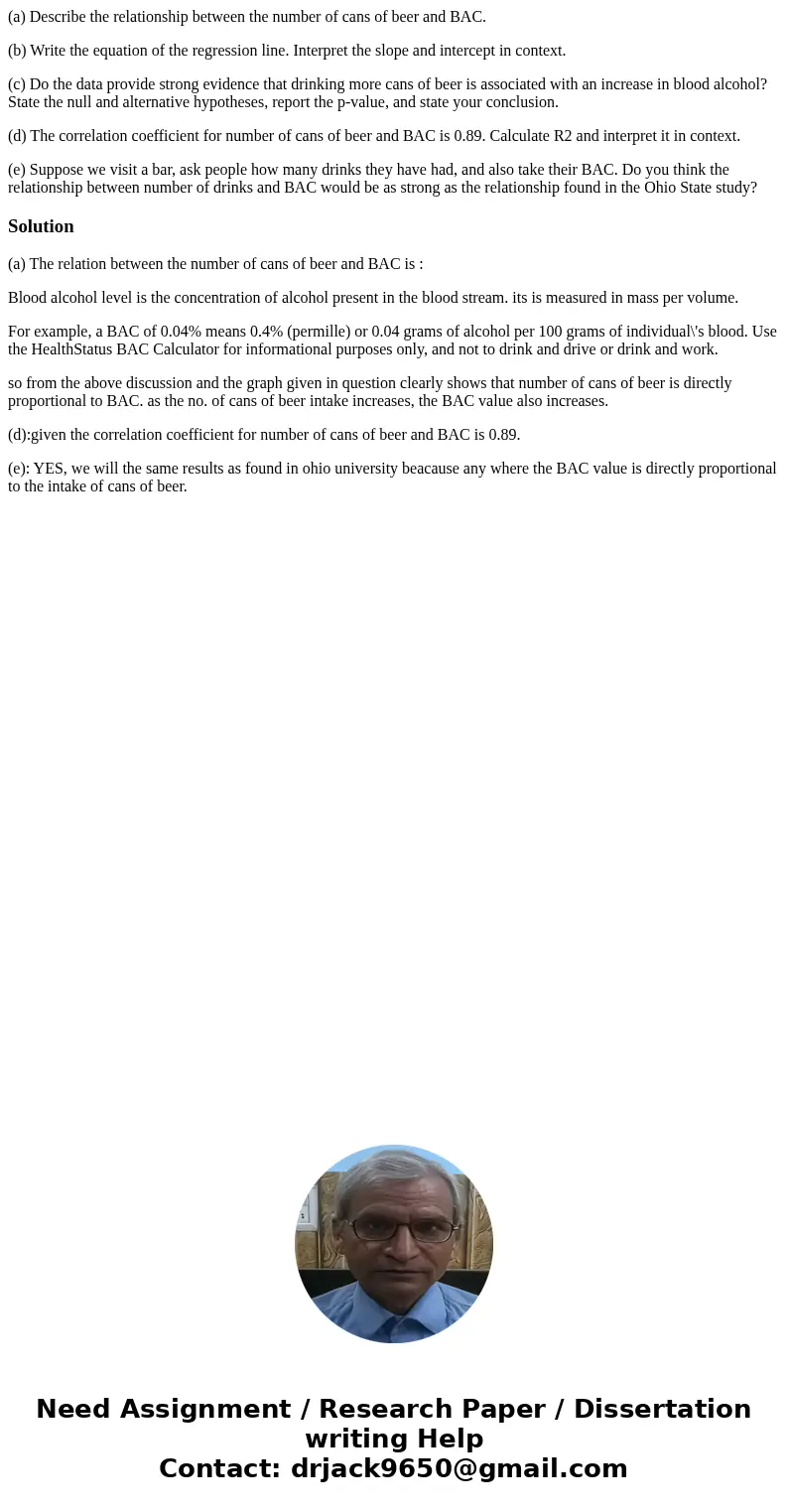a Describe the relationship between the number of cans of be
(a) Describe the relationship between the number of cans of beer and BAC.
(b) Write the equation of the regression line. Interpret the slope and intercept in context.
(c) Do the data provide strong evidence that drinking more cans of beer is associated with an increase in blood alcohol? State the null and alternative hypotheses, report the p-value, and state your conclusion.
(d) The correlation coefficient for number of cans of beer and BAC is 0.89. Calculate R2 and interpret it in context.
(e) Suppose we visit a bar, ask people how many drinks they have had, and also take their BAC. Do you think the relationship between number of drinks and BAC would be as strong as the relationship found in the Ohio State study?
Solution
(a) The relation between the number of cans of beer and BAC is :
Blood alcohol level is the concentration of alcohol present in the blood stream. its is measured in mass per volume.
For example, a BAC of 0.04% means 0.4% (permille) or 0.04 grams of alcohol per 100 grams of individual\'s blood. Use the HealthStatus BAC Calculator for informational purposes only, and not to drink and drive or drink and work.
so from the above discussion and the graph given in question clearly shows that number of cans of beer is directly proportional to BAC. as the no. of cans of beer intake increases, the BAC value also increases.
(d):given the correlation coefficient for number of cans of beer and BAC is 0.89.
(e): YES, we will the same results as found in ohio university beacause any where the BAC value is directly proportional to the intake of cans of beer.

 Homework Sourse
Homework Sourse